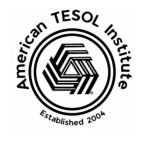In August 2012, the world celebrated a monumental achievement as NASA’s Mars Rover Curiosity landed on the Red Planet, marking a pivotal moment in space exploration. This event not only highlighted the brilliance of human ingenuity but also provided educators, including TESOL teachers, with unique opportunities to teach language, science, and global collaboration.
In this article, we’ll explore how space exploration—led by institutions like the National Aeronautics and Space Administration (NASA), Jet Propulsion Laboratory (JPL), and private companies like SpaceX—can inspire ESL students. We’ll also discuss how to use this inspiration to create engaging lesson plans that integrate vocabulary, science, and curiosity.
The Mars Rover Curiosity: A Linguistic Exploration
The name “Curiosity” itself is an excellent starting point for ESL lessons. As a noun, it embodies the human desire to learn, explore, and discover. Similarly, the term “rover” refers to a wanderer, while “Mars” can mean both the Roman god of war and the fourth planet from the Sun. These words showcase how language can have layered meanings, providing an opportunity to teach students about homonyms, contextual usage, and cultural references.
Teaching Idea:
- Word Exploration: Have students research and present other multi-meaning words (e.g., “light,” “fair,” or “spring”). Discuss how context changes their meanings.
- Role Play: Ask students to create short skits featuring Mars, Curiosity, and Rover as characters. This activity reinforces vocabulary and encourages creativity.
NASA and Jet Propulsion Laboratory (JPL): Uniting Science and Education
NASA and JPL’s contributions to space exploration go beyond launching rovers—they inspire millions worldwide to think beyond earthly boundaries. The science behind missions like Curiosity offers countless teaching opportunities, especially for ESL learners who may be fascinated by space.
Fun Fact:
Did you know the distance to Mars varies based on its elliptical orbit? Depending on the alignment, it could take six to nine months to travel to the Red Planet.
Teaching Idea:
- Space Math: Create an activity where students calculate travel times to Mars based on its distance from Earth at various points in its orbit. This integrates English language practice with STEM concepts.
- Mars Timeline: Have students create a visual timeline of major Mars missions, labeling them with key dates and achievements.
SpaceX and the New Era of Exploration
While NASA paved the way for space exploration, private companies like SpaceX have redefined the industry. Founded by Elon Musk, SpaceX has made remarkable strides, including the development of reusable rockets and the Starship program, which aims to transport humans to Mars.
Fun Fact:
SpaceX’s Falcon Heavy is one of the most powerful rockets ever built, capable of lifting over 140,000 pounds into orbit.
Teaching Idea:
- Current Events: Use SpaceX’s latest launches or milestones as topics for class discussions, encouraging students to practice speaking and listening skills.
- Debate: Organize a classroom debate on the pros and cons of space colonization, allowing students to practice argumentation in English.
Integrating Space Themes into TESOL Lesson Plans
The vast universe provides an endless source of inspiration for TESOL teachers. Here’s how you can make space exploration a core theme in your classroom:
- Vocabulary Building:
- Teach space-related terms like “orbit,” “gravity,” “galaxy,” and “astronaut.”
- Create word association games where students link space terms to everyday concepts.
- Reading Comprehension:
- Assign articles about Mars missions, SpaceX, or other space-related topics. Follow up with comprehension questions to assess understanding.
- Use simplified scientific texts to introduce students to technical writing.
- Writing Assignments:
- Have students imagine and write about life on Mars. What challenges would they face? What solutions would they create?
- Ask students to draft a letter to NASA or SpaceX, sharing their thoughts about space exploration.
- Interactive Projects:
- Build models of the solar system or Mars rovers as a group activity, labeling parts and explaining their functions in English.
- Use augmented reality (AR) or virtual reality (VR) apps to simulate space travel and describe the experience.
Fun Facts About Space Exploration
- The first living creature to orbit Earth was a dog named Laika, aboard the Soviet Sputnik 2 in 1957.
- The Curiosity Rover sings “Happy Birthday” to itself every year on the anniversary of its landing.
- SpaceX’s Starship is designed to carry 100 passengers and aims to make Mars colonization a reality.
Connecting Language to the Stars
By incorporating space exploration into your TESOL curriculum, you inspire students to think big while practicing language skills. Lessons on NASA, JPL, and SpaceX not only enrich vocabulary but also foster critical thinking, collaboration, and a global perspective.
With every word learned and every story shared, TESOL teachers have the power to spark curiosity in their students—just like Curiosity, the rover, continues to explore the vastness of Mars. So, look to the stars, engage your students, and let the spirit of discovery guide your classroom!


